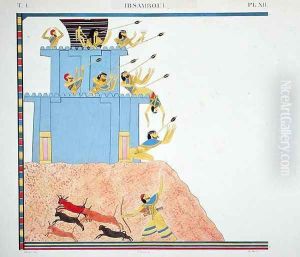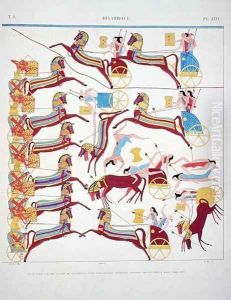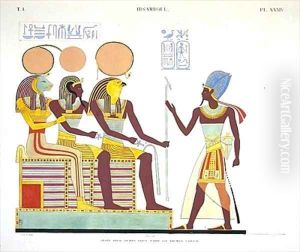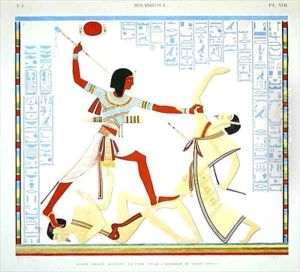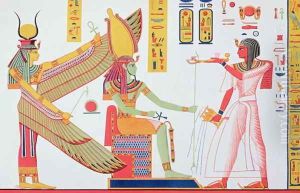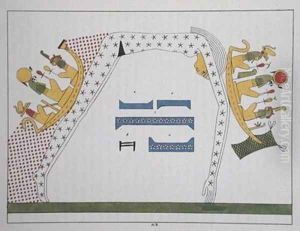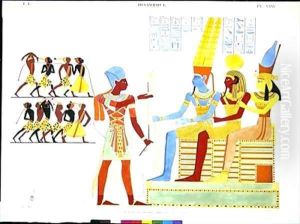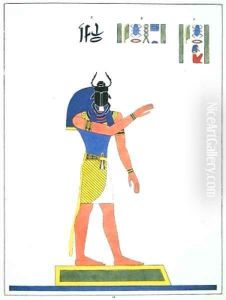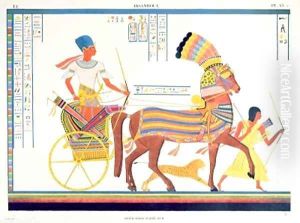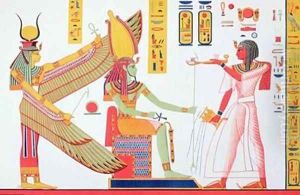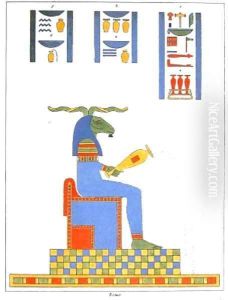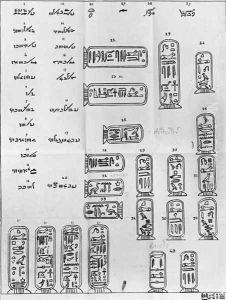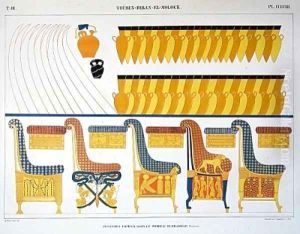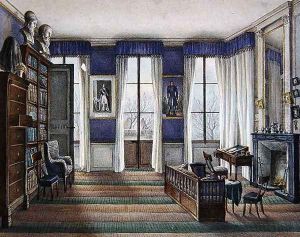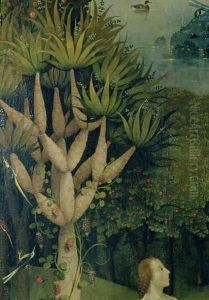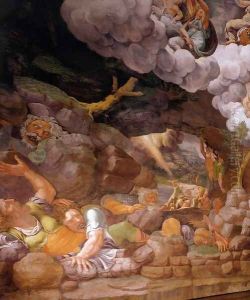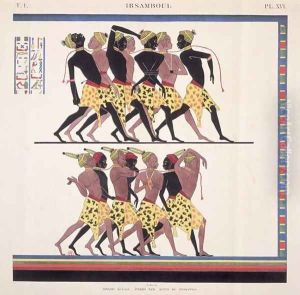





Interpretation of the frescoes at Ibsambul depicting Nubian slaves, from 'Monuments de l'Egypte et de la Nubie' c.1835
-
About Reproduction
Discover the allure of art with our faithful reproduction of "Interpretation of the frescoes at Ibsambul depicting Nubian slaves, from 'Monuments de l'Egypte et de la Nubie' c.1835", originally brought to life by the talented Jean Francois Champollion. Unlike posters or prints, our hand-painted oil painting breathes an unique sense of depth and texture into your space. Every detail, every stroke, and every texture is meticulously recreated, paying the perfect homage to Jean Francois Champollion and his artistic vision.
Owning this piece is more than just decoration - it's a statement of your refined taste in art. Let the vibrant colors and intricate details of this replica serve as a daily reminder of the beauty in our world. Elevate your decor and appreciate the richness of art with our replica of this masterpiece.
-
Painting Description
The frescoes at Abu Simbel, a complex of two temples in southern Egypt, have been a subject of fascination and study since their rediscovery in the 19th century. Jean-François Champollion, a French scholar and philologist best known for deciphering the Rosetta Stone, documented these ancient artworks in his monumental work "Monuments de l'Egypte et de la Nubie" around 1835. In this publication, Champollion provided detailed descriptions and interpretations of various Egyptian antiquities, including the frescoes at Abu Simbel.
The frescoes at Abu Simbel are significant for their depictions of Nubian slaves, which provide insight into the relationship between ancient Egypt and Nubia, as well as the broader socio-political dynamics of the region during the New Kingdom period (c. 1550–1077 BCE). The temples, originally carved out of the mountainside during the reign of Pharaoh Ramesses II, served both as a lasting monument to the pharaoh and as a symbol of Egyptian power and divine authority.
Champollion's interpretation of the frescoes at Abu Simbel is particularly valuable because it was one of the earliest scholarly works to analyze these images using a combination of linguistic expertise, historical context, and art historical methods. His analysis contributed to the understanding of the iconography and symbolism present in the frescoes, as well as the identification of various figures and scenes depicted in the artwork.
The frescoes themselves depict a range of subjects, including scenes of tribute and subjugation of Nubian peoples, which reflect the complex interactions between Egypt and its southern neighbors. These interactions included trade, military campaigns, and the assimilation of Nubian elements into Egyptian culture. The portrayal of Nubian slaves in the frescoes is a testament to the influence of Nubian culture on Egypt and the importance of Nubia in the economic and military strength of the Egyptian empire.
Champollion's work remains a foundational text for Egyptologists and art historians studying the art and culture of ancient Egypt. His interpretations have paved the way for subsequent generations of scholars to further explore the significance of the frescoes at Abu Simbel and their place within the broader narrative of ancient Egyptian art and history.
-
Lead Time & Shipping
When you order this oil painting replica, it typically takes 2-3 weeks to paint. If the artwork is more complex, it might need a little more time to ensure the best quality. Once it's ready, we'll send you a photo for your approval. After you give the green light, we'll ship it to you for free.
-
Return & Refund
We believe in the quality of our hand-painted oil painting reproductions, and your satisfaction is our priority. If for any reason, you are not completely satisfied with your purchase, we offer a 45-day return policy. You can return your artwork within 45 days of receipt and receive a full refund. Please note that the artwork must be returned in the original packaging and in the same condition as it was received.





